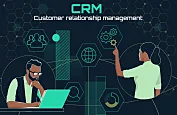
- What are Profitable Apps?
- How to Make a Profitable App in 7 Easy Simple Steps
- Core Features You Must Add In Profitable App Development
- What Is the Average Timeline for Profitable App Development?
- How Much Does It Cost to Develop a Profitable App?
- Factors Affecting the Cost of Profitable App Development
- How to Make Money from Creating an App
- Real-Life Use Cases of Profitable App Development
- Finding the Right Development Partner with MobileAppDaily
- Conclusion

Mobile apps are now essential in the current digital world. They help organizations increase sales, streamline various processes, and improve customer engagement.
According to data released by Statista, revenue from mobile applications reached $522 million in 2024 and is expected to continue rising. This amount highlights the immense potential for profitability in this sector.
With millions of apps available, standing out is crucial, and achieving financial success requires strategic planning. Understanding the market is essential today, and execution is also necessary. Combining these elements will lead you to success.
In this guide, we are exploring essential steps for profitable app development. It begins with identifying your target audience and moves to implementing a robust monetization strategy. Each step is crucial for success in app development.
What are Profitable Apps?
Profitable apps are often distinguished by their ability to address real-life challenges and maintain high levels of user engagement. For instance, gaming apps such as "Candy Crush" and "Clash of Clans" are known to be highly profitable due to their engaging content that encourages in-app purchases and ad viewing. Similarly, apps in the fitness and productivity sectors also attract numerous users and generate significant revenue by offering valuable, everyday tools and services.
Subscription-based apps like Netflix, Spotify, and various digital news platforms have proven successful by capitalizing on the recurring revenue model, where users pay a regular fee for continued access to content. This model provides a steady income stream and encourages ongoing user engagement.
Utility apps that provide indispensable services, such as Dropbox for cloud storage and Microsoft Office for productivity, also see high demand and profitability. Their widespread use across different user demographics underscores their fundamental necessity.
Social media apps and platforms such as Facebook, Instagram, TikTok, and Twitter leverage their extensive user bases to generate revenue. It is done primarily through advertising and sponsored content. This monetization strategy taps into the vast reach and influence these platforms hold in the digital space.
How to Make a Profitable App in 7 Easy Simple Steps

Follow these simple yet significant steps. Learn how to make a profitable app smoothly and effectively:
Step 1: Identify Your Target Audience
The first step to developing a profitable app is understanding your target audience. Conduct thorough market research to identify their needs, preferences, and pain points. Prepare questionnaires, surveys, and focus groups to gather insights. Use online analytics tools to collect data. These methods help you gather valuable data for analysis. This data is crucial for making informed decisions. Ensure the use of various approaches to achieve a comprehensive understanding of user preferences.
Understanding your audience allows you to tailor your app’s features to meet their needs, leading to a more user-friendly experience. A user-friendly app is more likely to succeed, and this success can translate into higher profits. Keep your target audience at the forefront of development and regularly update your research to stay relevant. This ongoing effort will help maintain user satisfaction.
Step 2: Define Your App’s Purpose and Features
Once you understand your audience, define your app's primary purpose. Determine whether it's a utility app, game, or social network. Knowing the app's category helps in planning its features. Then, outline the core features that will address your users' needs.
Prioritize features based on their importance and feasibility, then create a Minimum Viable Product (MVP) with these essential features. This approach helps you test the market early and gather crucial feedback before making further investments. Refining the app based on this feedback is essential, as it saves time and resources. An MVP allows you to identify necessary improvements and validate your concept before committing to major spending.
ALSO READ: The Who, Why & What of developing a Minimum Viable Product
Step 3: Conduct Competitive Analysis
Analyze your competitors to understand what they are doing right. Identify where they are lacking and look for gaps in the market.
Conducting a competitive analysis helps you stand out by enabling you to offer unique features. To enhance the user experience, use tools like App Annie and Sensor Tower, which gather data on competitors' performance and strategies. Analyzing this data provides valuable insights into market trends and user preferences, allowing you to make informed decisions and optimize your app's performance and strategy accordingly.
Step 4: Pick the Right Development Approach
Selecting the right development approach is crucial for profitable app development. You can opt for native development, which provides high performance and a seamless user experience. However, keep in mind that it can be costly and time-consuming. Therefore, it's important to evaluate your budget and timeline before making a decision.
Alternatively, you can choose cross-platform development, which allows you to reach a wider audience using a single codebase, effectively saving time and resources. Before making a decision, thoroughly assess your budget, timeline, and target platforms. Carefully consider these factors to make an informed choice that aligns with your goals.
Step 5: Create a User-Friendly Interface
A user-friendly UI and smooth UX are crucial for app profitability and user retention. Professional design ensures intuitive and visually appealing interfaces. Prioritize easy navigation, responsive design, and fast loading times. Validate usability with wireframes and prototypes before finalizing design decisions. Testing these aspects early saves time and enhances user satisfaction.
Step 6: Develop and Test Your App
Once the design is ready, transition to the development phase. Select a reliable development team with the necessary experience to create a profitable app. By following agile development practices, you can ensure flexibility and continuous improvement throughout the process.
Rigorous testing is crucial for identifying and fixing bugs, ensuring compatibility across various devices, and delivering a high-quality product. Utilizing automated testing tools can enhance efficiency, while beta testing with real users provides valuable feedback. This comprehensive approach helps in maintaining the overall quality and performance of the product.
Step 7: Launch and Market Your App
A successful app launch requires a solid marketing plan that includes several key strategies. First, create buzz before the launch by using social media, blogs, and email campaigns. Utilize App Store Optimization (ASO) to enhance app visibility. Partner with influencers and tech bloggers to reach a broader audience. Implement limited-time promotions to entice early users and boost referrals. Ensure ongoing engagement after the launch through regular updates and community-building activities. This comprehensive approach maximizes visibility and user engagement for your app launch.
Core Features You Must Add In Profitable App Development

You must integrate the following features in your profitable app development to give users a better experience:
Intuitive User Interface (UI)
A user-friendly interface is paramount and ensures seamless navigation and engagement. This makes the app easy and accessible for all users. Intuitive design helps users accomplish tasks quickly, and clear labels and icons guide users through the app.
Performance Optimization
Optimizing app performance involves efficient coding practices and leveraging technologies. This can easily ensure fast loading times and smooth operation across various devices.
Data Security Measures
Implement robust security protocols to protect user data. Use encryption to secure sensitive information and implement secure authentication methods. Moreover, ensure compliance with data protection regulations like GDPR or CCPA.
Offline Functionality
Allow users to access the app's basic features even without an internet connection. This enhances usability and ensures continuous engagement in offline scenarios.
Analytics and User Insights
Integrate analytics tools to gather insights into user behavior, preferences, and app performance. This data helps in making informed decisions for future updates and improvements. These insights allow developers to understand user needs better, which leads to more relevant app updates.
Payment Gateway Integration
Facilitate secure and seamless transactions within the app. Integrating trusted payment gateways enhances user trust and encourages transactions within the platform.
Social Media Integration
Allow users to share content from the app on social media platforms. Additionally, enable social login options to simplify user registration and enhance user engagement.
What Is the Average Timeline for Profitable App Development?
Developing a profitable app involves a series of well-defined phases, each critical to the success of the final product. Each phase has specific tasks and estimated durations to ensure a smooth development process.
Understanding the timeline for app development can help in better planning, resource allocation, and setting realistic expectations.
Below is a breakdown of these phases, along with the approximate time required for each step:
| Development Phases | Duration (In Weeks) |
|---|---|
| Discovery | 2-4 |
| Design | 4-6 |
| Development | 8-12 |
| Testing | 2-4 |
| Deployment | 1-2 |
| Post-Launch Services | Ongoing Process |
| Maintenance | Ongoing Process |
How Much Does It Cost to Develop a Profitable App?
Creating a profitable app costs vary greatly based on complexity, features, team location, and platform. Development costs are significantly influenced by factors like app complexity and chosen features. Additionally, the location of the development team and the selected platform can impact expenses. Since costs can vary widely, careful planning and budgeting are crucial.
| App Complexity | Description | Cost Range |
|---|---|---|
| Simple Apps | Basic functionality with minimal features. | $5,000 - $10,000 |
| Moderately Complex Apps | More features and integrations, suitable for medium-sized businesses. | $10,000 - $20,000+ |
| Highly Complex Apps | Advanced features, high customization, suitable for large enterprises. | $20,000 - $50,000+ |
| Enterprise-Level Apps | Custom-built solutions with extensive features and scalability. | $50,000+ |
Simple apps might cost around $5,000 to $10,000, whereas more complex apps with advanced features can range from $20,000 and up. The costs for high-end or enterprise-level apps may be even higher. Customization involves tailoring the app to specific business needs, while scalability ensures the app can handle increased usage over time.
ALSO READ: How Much it Costs to Build an App Like Uber in 2024?
Factors Affecting the Cost of Profitable App Development

Developing a profitable app involves various elements that impact overall costs. Understanding these factors can help in budgeting and planning an effective development strategy.
1. Feature Complexity
The number and sophistication of features you want in your app significantly affect the cost. Advanced functionalities, such as real-time updates, in-app purchases, and AI-based features, require more development time and resources, which increases the overall expense.
2. Platform (iOS, Android, or Both)
Developing an app for a single platform (iOS or Android) is less costly than creating one for both. Cross-platform development can save costs but might not leverage each platform's unique features completely, which can impact performance and user experience.
3. UI Design
The complexity and customization of the user interface (UI) and user experience (UX) design play a crucial role in cost determination. A highly customized and intuitive design requires more time for planning, designing, and testing, thus increasing the development cost.
4. Backend Infrastructure
The scale and complexity of the server-side components, including databases, server logic, and API management, directly influence the cost. A robust and scalable backend is essential for handling large volumes of data and ensuring smooth app performance.
5. Third-Party Integration
Integrating third-party services or internal systems through APIs can add to the development costs. This includes payment gateways, social media logins, analytics tools, and other external services that enhance the app’s functionality but require additional development and maintenance.
6. Security Requirements
Implementing measures to protect user data and prevent breaches is crucial. Enhanced security features such as data encryption, secure payment processing, and compliance with privacy regulations add to the development complexity and cost.
7. Maintenance and Updates
Post-launch support, including regular updates, bug fixes, and feature enhancements, is essential for keeping the app functional and relevant. These ongoing maintenance efforts are an important aspect of the overall cost and must be budgeted for long-term success.
ALSO READ: How To Create An App From Scratch in 2024: A Complete Guide?
How to Make Money from Creating an App
There are four major ways to make money from apps which are as follows:
1. App Downloads
Offering your application for free guarantees the most downloads. However, the best approach is to create both premium and open-access versions. Test each option for revenue generation, then decide which one works best for your goals.
Your target market and the kind of app you intend to publish will determine which of these monetization strategies you should choose. The goal of a good monetization strategy is to make the app seem and feel like a natural part of the user experience. To increase your chances of making money from apps, you should aim to attract a sizable and engaged user base.
2. In-App Purchases
In-app purchases enhance the user experience by offering paid features or content. Gaming apps often encourage repeat spending on consumable items like game tokens or non-consumable items such as premium subscriptions.
ALSO READ: Learn How To Add In-App Purchases In iOS: IAP With Swift Tutorial
3. In-App Advertising
In-app advertising generates revenue through user clicks and impressions. To maximize earnings, utilize diverse ad formats and platforms, such as Google's AdMob and Chartboost. By closely monitoring performance metrics, you can continuously refine and improve your advertising strategy.
ALSO READ: Mobile And In-App Advertising Trends: Here Is what's Changing in 2024
4. Subscription Models
A free app can also make money through upgrades and subscriptions. Recurring revenue is a fantastic fit for the subscription model, which is one of the top startup models. That is the use case for a premium membership. Users can upgrade their accounts to get access to this feature if they would like to have an infinite number of likes.
The upgraded subscription includes bonus features: location change, rewinds, and an ad-free experience.
You can use the same pricing structure and business plan for your profitable app development. Provide the software for free download and use, but save the finest features for those who are prepared to pay.
ALSO READ: Learn how a free app makes money
Real-Life Use Cases of Profitable App Development
TikTok
- Generated an estimated $16.1 billion in revenue in 2023, a 67% increase year-on-year.
- Had 1.5 billion monthly active users in 2023, projected to reach 1.8 billion by the end of 2024.
- Success is driven by engaging content and a strong AI-powered recommendation system.
Source: Business of Apps
Uber
- Generated $37.2 billion in revenue in 2023.
- Revenue breakdown: $19.6 billion from ride-hailing services, $12.1 billion from Uber Eats delivery services.
- 137 million monthly active users in 2023.
Source: Business of Apps
Shein
- Generated $32.5 billion in revenue in 2023, a 43% increase from the previous year.
- Attracted 88.8 million active shoppers globally in 2023.
- Most downloaded fashion apps in 2023, leveraging rapid production and effective social media marketing.
Source: Business of Apps
Finding the Right Development Partner with MobileAppDaily
When it comes to developing a profitable ecommerce app, partnering with the right experts is crucial. MobileAppDaily stands out as a trusted platform for connecting with top-tier ecommerce app development companies. Their meticulously curated directory features firms that excel in delivering high-quality solutions tailored to your specific business needs.
Here's how MobileAppDaily can elevate your ecommerce app development journey:
- Expertise: Listed companies on MobileAppDaily possess deep expertise in ecommerce app development, covering strategies, user-centric design, and cutting-edge technology.
- Customized Solutions: Discover partners whose strengths align perfectly with your ecommerce project's unique requirements and objectives.
- Reputation and Reliability: MobileAppDaily's rigorous selection process ensures that you collaborate with reputable, transparent companies known for their reliability and track record.
Explore MobileAppDaily's directory of ecommerce app development companies to find the ideal partner for transforming your ecommerce vision into a successful reality.
Conclusion
As the digital landscape evolves, mobile apps play a crucial role in driving engagement and revenue. Creating a successful app involves understanding market dynamics and user preferences. By focusing on user-centric design and employing agile development practices, app performance can be optimized to capitalize on downloads, purchases, ads, and subscriptions. Mobile apps are integral to modern business strategies, offering direct user interaction and numerous revenue generation opportunities. Understanding market dynamics ensures that apps meet user needs, maximize engagement, and ultimately enhance revenue potential.
Whether you're new or experienced in development, these strategies on how to create an app and make money will help. They guide you toward building a successful and profitable app venture. embrace the opportunities of the app economy today to realize your app's potential.
Developing a profitable app follows key phases: discovery, design, development, testing, deployment, and maintenance. Each phase ensures the app meets objectives and user satisfaction.
Understanding timelines to know how to make a profitable app helps manage resources, mitigate risks, and deliver high-quality apps. Continuous monitoring and adaptation post-launch contribute to long-term success.
It ensures the app evolves with user feedback and technology advancements, maintaining relevance and user satisfaction. Regular updates sustain app performance and engagement, fostering a loyal customer base.
Frequently Asked Questions
-
How to create an app and make money?
-
What factors contribute to the success of an app?
-
How can market research impact app profitability?
-
What are the key stages in app development?
-
How can app monetization strategies be optimized?
-
Why is user feedback crucial during app development?
-
How profitable are Android applications?






















